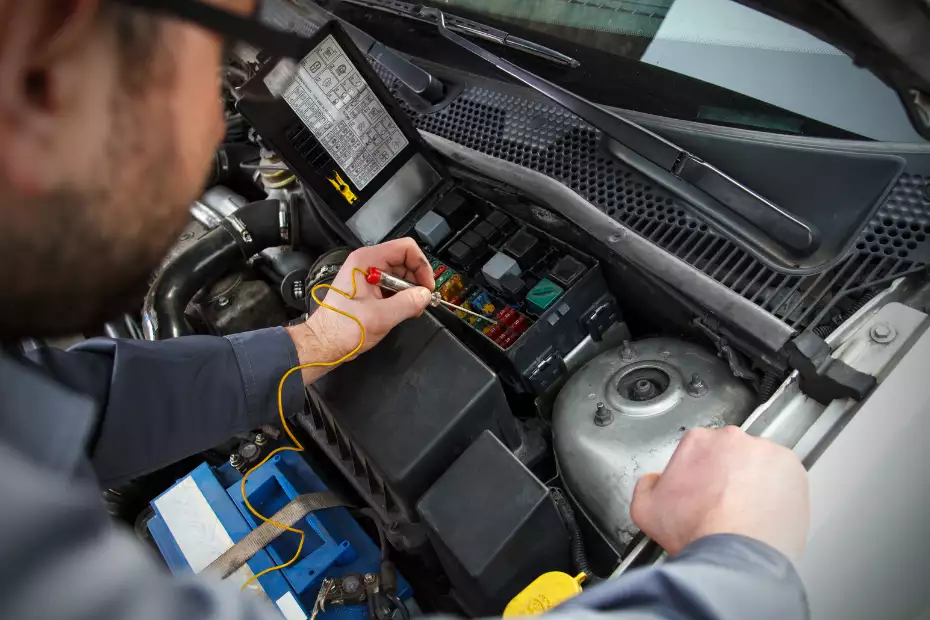Driving in heavy rain or snow presents unique challenges and safety risks. Proper preparation and cautious driving can significantly reduce the risks associated with these adverse weather conditions.
Heavy rain can lead to hydroplaning, reduced visibility, and slippery roads, while snow and ice can compromise traction and handling. Ensuring your vehicle is equipped for these conditions and adopting safe driving habits are crucial for staying safe on the road.
This guide will provide you with practical tips on how to keep your car safe during heavy rain or snow, including maintaining your vehicle, using appropriate tires, adjusting your driving style, and preparing for emergencies. By following these guidelines, you can go through severe weather conditions more confidently and securely.
Maintaining Your Vehicle
Regular vehicle maintenance is critical for ensuring safety during adverse weather conditions. Check your windshield wipers and replace them if they leave streaks or are worn out, as clear visibility is essential in heavy rain and snow.

Ensure that your headlights, taillights, and turn signals are functioning correctly to improve your visibility to other drivers. Keep your windshield washer fluid topped up with a winter-specific solution to prevent it from freezing.
Additionally, have your battery checked, as cold weather can reduce its efficiency. Ensuring that your brakes, tires, and suspension are in good condition is vital for optimal performance and safety during heavy rain or snow.
Using Appropriate Tires
Choosing the right tires for the weather conditions is crucial for maintaining traction and control. For heavy rain, ensure your tires have adequate tread depth to channel water away and reduce the risk of hydroplaning.
All-season tires can perform well in moderate rain, but consider using rain-specific tires if you frequently encounter heavy downpours. For snowy and icy conditions, winter tires provide better traction due to their specialized rubber compounds and tread patterns designed to grip snow and ice.

If you live in an area with severe winters, consider using snow chains or studded tires for added safety. Regularly check tire pressure, as it can fluctuate with temperature changes, and ensure your tires are properly inflated.
Adjusting Your Driving Style
Adapting your driving style to the weather conditions is essential for staying safe on the road. In heavy rain, reduce your speed to minimize the risk of hydroplaning and increase your following distance to allow for longer stopping distances.
Avoid sudden movements, such as sharp turns and hard braking, which can cause loss of control. Use your headlights to improve visibility, but avoid using high beams, as they can reflect off the rain and reduce visibility further.

In snowy and icy conditions, drive at a slower pace and maintain a greater following distance. Accelerate and decelerate gently to avoid skidding, and use lower gears to improve traction on slippery surfaces. Be cautious on bridges and overpasses, as they can freeze before the rest of the road.
Preparing for Emergencies
Being prepared for emergencies is essential when driving in heavy rain or snow. Keep an emergency kit in your car that includes items such as a flashlight, blanket, first aid kit, water, non-perishable food, and a spare tire.
In snowy conditions, add items such as an ice scraper, snow brush, shovel, and tire chains. Ensure your phone is fully charged before setting out and have a car charger on hand.
If you get stuck in snow or stranded due to heavy rain, stay with your vehicle and avoid venturing out in severe conditions. Turn on your hazard lights and call for assistance. Being prepared can help you handle unexpected situations and stay safe during adverse weather conditions.
Improving Visibility
Visibility is a major concern when driving in heavy rain or snow. Ensure that your windshield and windows are clean and free of streaks to reduce glare and improve your view of the road. Use your defroster to keep windows clear of fog and ice.

In heavy rain, turn on your headlights to make your vehicle more visible to others. In snowy conditions, consider using fog lights if your vehicle is equipped with them, as they can help improve visibility.
Regularly check that your windshield wipers are in good condition and replace them if necessary. Keeping your windows, mirrors, and lights clean and functional is essential for safe driving in poor weather conditions.
Staying Informed
Stay informed about weather conditions and road closures by checking the forecast before you travel. Use a reliable weather app or listen to local news updates to stay up to date on current conditions.
If severe weather is expected, consider postponing your trip or taking an alternative route. Inform someone of your travel plans and estimated arrival time in case of emergencies.
Being aware of weather conditions and planning accordingly can help you avoid dangerous situations and ensure a safer journey.
By following these tips and maintaining a proactive approach to vehicle safety, you can significantly reduce the risks associated with driving in heavy rain or snow. Regular maintenance, appropriate tires, adjusted driving habits, emergency preparedness, improved visibility, and staying informed are key to navigating adverse weather conditions safely. Prioritize safety and take the necessary precautions to keep your car and yourself safe on the road.

